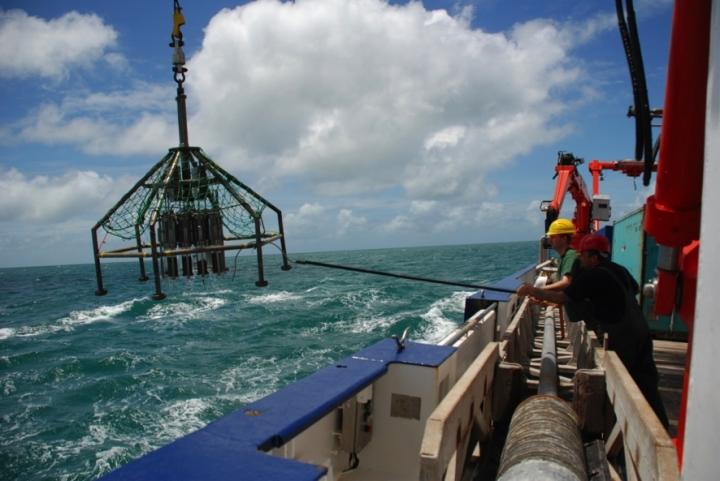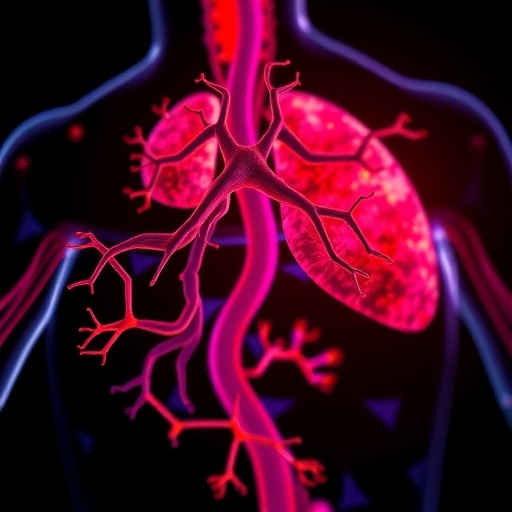The phenomenon is linked to gradual contraction of the tropical rain belt over the last 5,000 years, according to a study conducted at the University of São Paulo. Its findings can help predict the region’s future climate
Rainfall associated with the Intertropical Convergence Zone (ITCZ), the belt of converging trade winds and rising air that encircles the Earth near the Equator, affects the food and water security of approximately 1 billion people worldwide. They include about 11% of the Brazilian population, concentrated in four states of the Northeast region – Rio Grande do Norte, Ceará, Piauí, and Maranhão. Large swathes of these states have a semi-arid climate, and about half of all their annual rainfall occurs in only two months (March and April), when the tropical rain belt reaches its southernmost position, over the north of the Northeast region. During the rest of the year, the tropical rain belt shifts further north. For example, it is responsible for peak rainfall in the coastal region of Venezuela in July and August.
Projecting the future behavior of precipitation in semi-arid areas like these is fundamental for society to be able to anticipate possible shifts in rainfall patterns due to ongoing climate change. A study by Cristiano Chiessi, a professor at the University of São Paulo (USP) in Brazil, and collaborators shows that precipitation in the north of Brazil’s Northeast region has systematically decreased in the last 5,000 years, contrary to an important paradigm in paleoclimatology. This revised view of what happened in the past helps produce a more realistic scenario for what may happen in the future.
An article on the study is published in Paleoceanography and Paleoclimatology. The study was supported by FAPESP.
“According to the prevailing paradigm, the tropical rain belt has migrated southward in the last 5,000 years. Our research suggests instead that its latitudinal oscillation range contracted, so that it now oscillates within a narrower band,” Chiessi told Agência FAPESP.
Valuable information regarding the responses of the climate system to different conditions is recorded in geological sediments deposited on the seabed. The study involves three independent indicators of precipitation deriving from sediments collected along the mouth of the Parnaíba on the Piauí-Maranhão border.
“We analyzed the ratio between levels of the chemical elements titanium and calcium. The titanium comes from continental rock erosion, while the calcium comes from the shells of marine organisms,” Chiessi said. “We also estimated the rate at which continental sediments accumulated on the seabed, and the composition of hydrogen isotopes in continental plant wax found in marine sediment. These three datasets, together with our analysis of numerical climate model outputs, pointed to contraction of the tropical rain belt in the last 5,000 years, rather than the suggested southward migration.”
The study also shows that surface temperature distribution in the two hemispheres is a key factor in the tropical rain belt’s position, also in contrast with the prevailing paradigm.
“According to the paradigm, southward migration of the tropical rain belt was due to a gradual increase in radiation received from the Sun by the southern hemisphere during the summer. The opposite occurred in the northern hemisphere, increasingly hindering northward migration of the tropical rain belt. However, our attention was drawn to two weaknesses in this model,” Chiessi said. “The first was the assumption that the rain belt’s position was determined by surface temperature distribution in both hemispheres, which don’t necessarily respond in a linear manner to the distribution of solar radiation. Secondly, the evidence supporting the paradigm was located almost solely in the northern hemisphere. There was no proof of the migration in the southern hemisphere.”
Although solar radiation did undergo the changes described, he went on, responses in the hemispheres were different owing to the difference in the area of the continents and oceans in each one (continents respond faster than oceans to changes in solar radiation). “It’s therefore necessary to revise the paradigm that has influenced paleoclimatology for two decades,” he said.
Numerical climate models suggest that by the end of this century the tropical rain belt’s latitudinal oscillation range will contract, further reducing rainfall in the northern portion of Brazil’s Northeast region, with potentially severe social and environmental consequences. However, if the Atlantic meridional overturning circulation (AMOC) becomes significantly weaker, reaching the tipping point predicted in another study by Chiessi, the warming of the South Atlantic will exceed that of the North Atlantic, forcing the rain belt southward. “This would have negative consequences in various parts of the world. In Brazil, however, it would prevent an even greater decrease in precipitation in the northern portion of the Northeast,” he said (more at: agencia.fapesp.br/23134/).
###
About São Paulo Research Foundation (FAPESP)
The São Paulo Research Foundation (FAPESP) is a public institution with the mission of supporting scientific research in all fields of knowledge by awarding scholarships, fellowships and grants to investigators linked with higher education and research institutions in the State of São Paulo, Brazil. FAPESP is aware that the very best research can only be done by working with the best researchers internationally. Therefore, it has established partnerships with funding agencies, higher education, private companies, and research organizations in other countries known for the quality of their research and has been encouraging scientists funded by its grants to further develop their international collaboration. You can learn more about FAPESP at http://www.
Media Contact
heloisa reinert
[email protected]
Original Source
https:/
Related Journal Article
http://dx.






